
06 Mar What They Don’t Tell You Before Going On A Supported Bike Tour
After months and months of research, you finally did it! You decided to take the plunge and go on your first bike tour with one of the various companies out there. Congratulations!
It’s certainly going to be epic and you’re going to finally cross off another milestone off your list real soon.
In a few weeks, you will be receiving information about the trip. Be sure you read it. It’s got a lot of information that will help you prepare for the trip.
But…just in case you haven’t read it, or maybe you’re just curious about a supported bike tour, let me give you some things to think about.
Tour Types
There are generally 4 types of bicycle tours out there:
- Self-supported
- Fully supported
- Van supported
- Inn to inn (also known as credit card camping)
Since this post is will be about supported bike tours, I won’t be covering what they don’t tell you about a self-supported or a credit card camping trip.
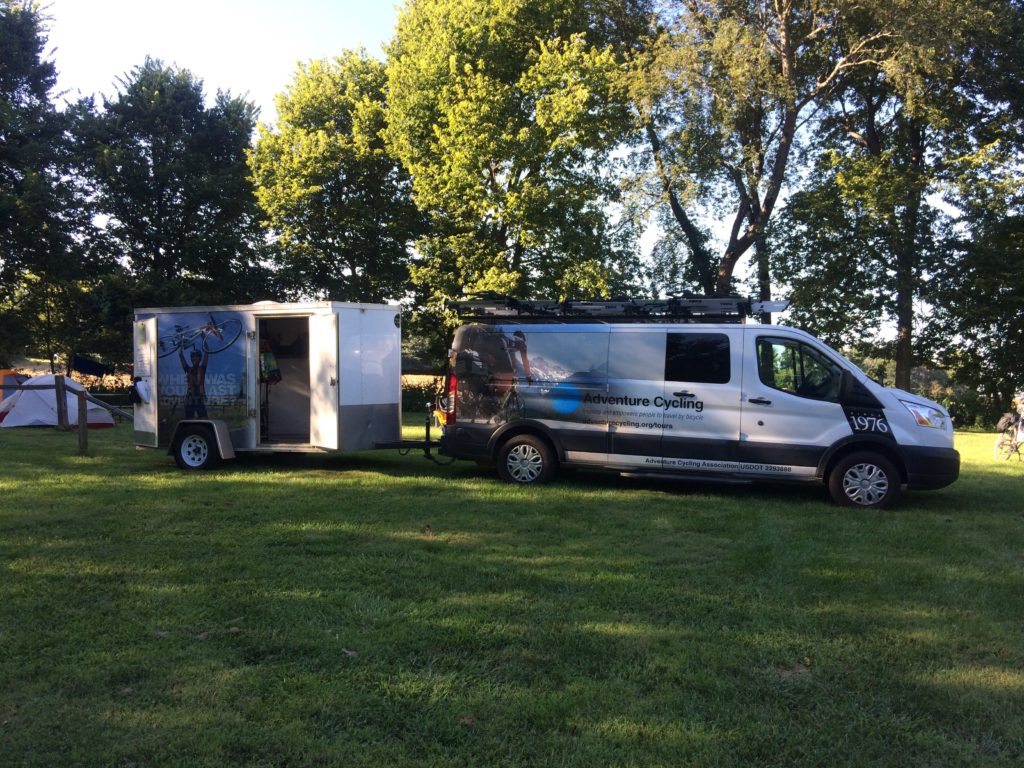
Van Supported
A van supported bike tour includes what we call a SAG (Support And Gear) vehicle. It is normally a van pulling a trailer.
In these types of tours, you have a van that is traveling with you along the route driven by a tour leader like myself. If your tour has 1 leader, he or she will be driving the van the entire camp.
If you have 2 leaders, one will be driving while the other will be riding “sweep” at the back of the group to help anyone who is having mechanical issues, is injured, or lost.
The SAG vehicle will be used to carry people’s luggage as well as all the necessary camping equipments, like a stove, food, and furniture required at a campground.
The SAG vehicle is not used to shuttle people around unless it becomes an issue of safety or on a case-by-case basis determined by the ride leaders.
If you’re tired and don’t feel like riding, sorry…you paid to ride, so I am going to insist that you ride. But if you’re sick and your ailment can cause you to fall off your bike, then I may make an exception.
Van supported tours are usually limited to about 15 people, which is the maximum number of seats a large passenger van can accommodate. With a smaller amount of riders, cooking responsibilities are usually shared amongst riders and leaders one pair at a time.
Van supported trips can range from 1 week to multiple months. The longer it takes, the more expensive the initial tour costs.

Fully Supported
A fully supported trip is similar to a van supported trip where a SAG vehicle is available for you. In addition to that, you have caterers and other vehicles on the route ensuring that you get to your location safely and as comfortably as possible.
A fully supported trip is usually staffed with about 7 or more tour leaders and caterers.
Fully supported tours will have more riders, usually about 30 to 50 riders, which is why it’s necessary to have that many ride leaders out on deck.
Typically, these tours last about a week and may end where you start or they may include a shuttle ride back to your start point.
There will be a truck dedicated to carrying everybody’s luggage. A vehicle for the caterers. A
vehicle for a dedicated mechanic and a couple of other vehicles who play the role of SAG.
Ride leaders may get the chance to ride 1 or 2 times during these tours, so don’t expect to see them out there all the time.
Additional Expenses
Travel To and From
The initial cost of a supported tour usually includes most living expenses during the duration of the ride.
This includes food and accommodations. Accommodations range from primitive camping, hostels, and motels.
Outside of this, you will need to figure out how you are going to get to the start location of the tour.
In most cases, people fly in from all parts of the country or even the world. Many drive, while there are a few who like to travel by train.
While flying is the fastest way to get to your destination, there is something enjoyable about taking the time before and after to do a pre or post tour vacation. I highly recommend that you factor in time to do this. It’s like getting 2 trips in 1.
Accommodations
Most people, including myself, enjoy arriving early to account for a day off before traveling.
You’ll have to find accommodations for these scenarios. This cost will have to be accounted for in addition to the tour. Consider who else will be traveling with you.
Some tour companies, like Adventure Cycling Association, work out a discount at the start and end locations. This isn’t always guaranteed, so ask before you book your room.

How about your bicycle?
Some of you might be traveling with your bike for the first time. You’ll need to figure out how you’re going to get the bike there and back.
Luckily, there are several options.
The first option is flying with your bike. Unfortunately, depending on the airline and on where you are coming from or going to each time, the cost can range from $50 to $300.
The second option is sending your bike. Fortunately, there are services, like Bike Flights, which negotiated a lower rate to ship your bike around the country. At Adventure Cycling, we even offer additional discounts to the cost if you use our code.
The third option is to bring it with you by car. This is the most practical and affordable option since you probably have the equipment that allows you to do this. It comes at a cost with the time spent on a long road trip. This could be a good or bad thing.
The fourth and final option is not bringing your bike at all and renting one at a nearby shop. This just requires some coordination to find a rental option, and if you compare the costs with flying your bike with some airlines to renting, this may be economically feasible.
For options 1 and 2 above, you’ll also have to factor in packaging your bike. If you’re not comfortable doing it yourself, a bike shop can help you pack it up for about $60 – $75 each time. The tour company will direct you to the bike shop at the start and end of the tour who can perform this service for you.
Be sure to call early to coordinate.
Of course, if you’re comfortable doing it yourself, you’ll need time to do it and find a way to box it up in a cardboard box or in a dedicated travel case. Again, more cost if you go with the latter.
Daily personal costs
Some people can get away without spending much on a trip since both major living expenses of food and shelter is taken care of for you. I’ve rarely seen anybody just live by this budgetary constraint though.
There are just too many personal things like toothpaste, clothing, souvenirs, etc., that you will have to purchase along the way. Things like chains and tubes will eventually fail with enough miles, dirt or punctures, so you have to factor that into your daily personal costs.
I know when I first traveled by bike, I didn’t think about these smaller incidentals, but they soon added up.
It is nice to allow some money to pay for a slice of pie that a particular small town is known for.
Gratuity
As a tour leader, we normally do not solicit gratuity. It’s just not polite and a taboo subject in some circles, but this doesn’t mean I can’t talk about it here.
Even though I am able to cross off an item off my bucket list and having the time of my life while working one of these tours, it is definitely hard work.
Not only do we make sure all accommodations are planned, we make sure everyone is enjoying themselves and allow them to stretch their comfort levels as much as possible. When we do receive gratuity, it is very much appreciated.
Don’t get me wrong, the thank-yous, handshakes, and hugs are great, too, but to be recognized with a big tip does make the hard moments all worthwhile.
How much should you tip? To give you a baseline, I normally get about $100 to $200 from each per person on a long epic trip. On a shorter one, I would get something between $50 – $100 per person.
I’ve received it in cash, checks, and even gift cards to major outdoor retailers like REI or online shopping sites like Amazon. It’s up to your discretion, but any form of these payments are truly amazing!
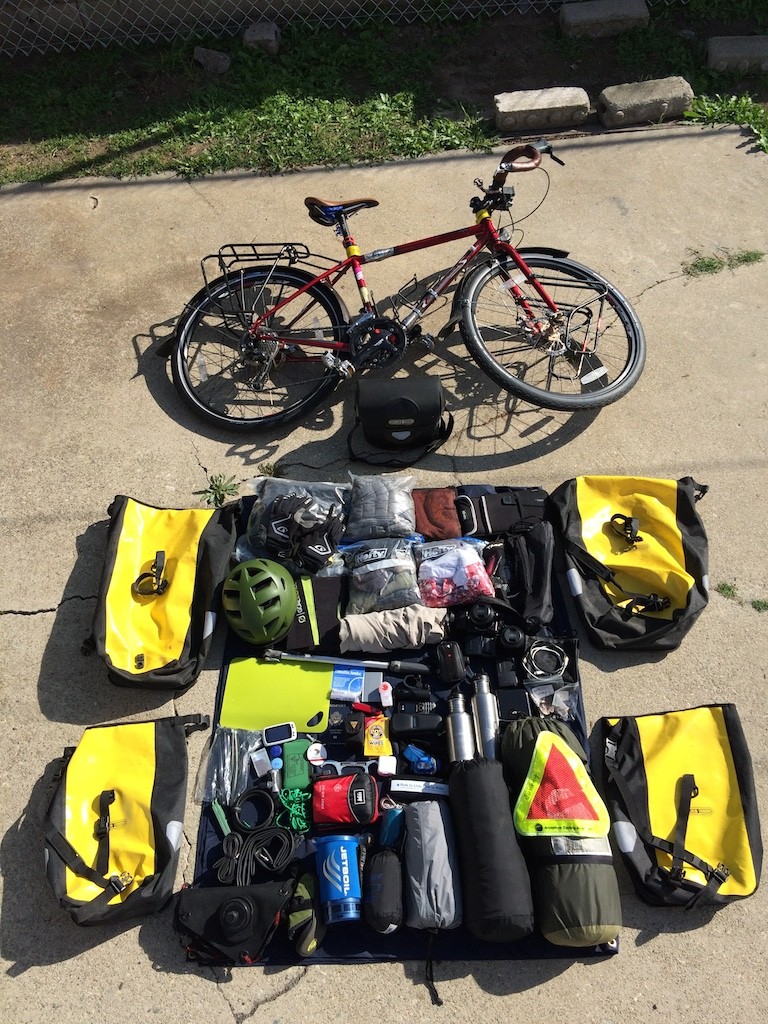
Equipment
On your bike
This piece of equipment would most likely be the focal point of your preparation and evoke one of the most popular questions we get as tour leaders.
What kind of bike should I ride?
In general, anything you’re comfortable with.
But if you want a longer answer, I would say ride something you’ve been training on. I prefer a steel framed bike with wide tires for comfort.
I don’t like riding road bikes because it’s just not comfortable for the long days you’ll be spending on it. Of course, as the “sweep,” we can’t go as fast as the lead rider since we are there watching over the last rider, so comfort is ideal for me.
Your bike should also have a rack and fenders. The rack to attach bags and fenders to keep your clothes dirt-free when wet weather hits.
It doesn’t matter what kind of bags you use to carry your gear, just get it off your back.
Your gearing should allow you to easily spin up long ascents. The idea is to preserve those knees as long as possible. Of course, you can always walk up if that’s not possible. Just remember, tour leaders will be right behind you the entire way.
Going back to tires, I would recommend swapping them out to something like a Schwalbe Marathon which has puncture prevention and incredible performance. I can’t say enough good things about these things.
If your tire looks worn or if you’re getting flats regularly, have it swapped out at the beginning of your trip and don’t wait until the middle of your trip. It’ll just make things a lot more frustrating.
It’s also not a bad idea to get your bike tuned up if you haven’t already done so.
You’re also wondering What should I bring on my ride? Here’s a list if what I think are absolutely necessary:
- Light riding jacket
- Food – lunch and snacks (salty and sweet)
- 3 bottles of water
- Sunblock
- Extra tube(s)
- Tire levers
- Hand pump
- Charged up front and rear lights
- Your wallet with identification, money, and credit cards
- Rain gear – jacket (best if your rain jacket is also your riding jacket), rain pants, wool cap, gloves, and neoprene socks/covers.
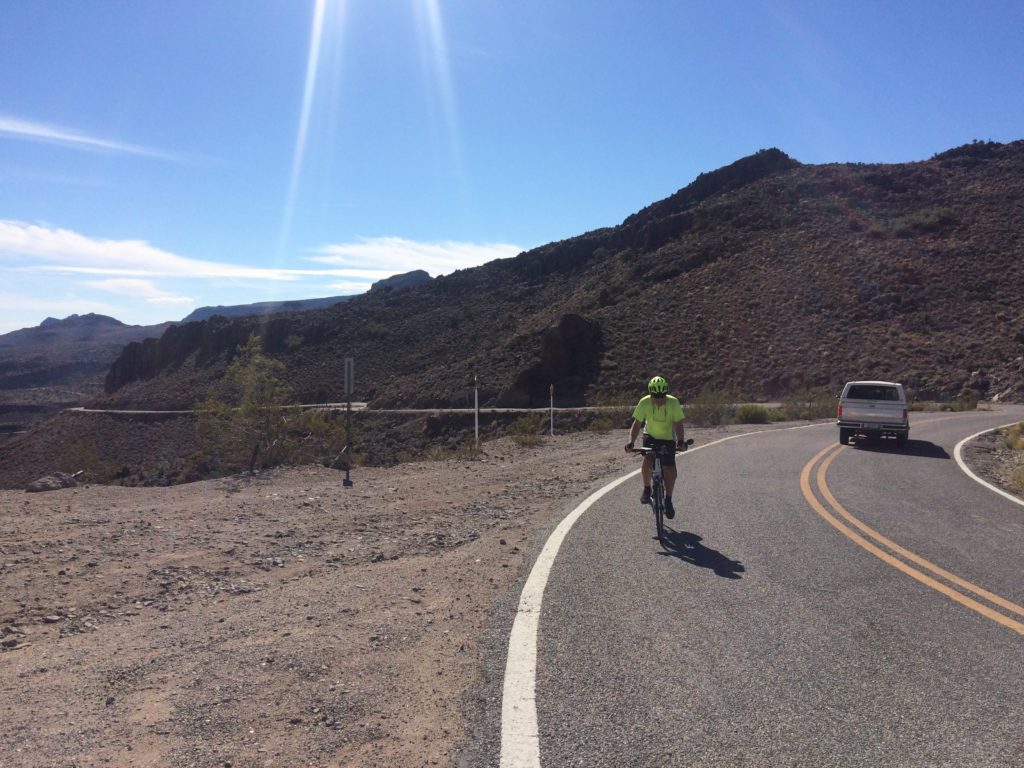
In camp
In camp, it’s pretty basic when it comes to the equipment that you’ll need.
You will need, at minimum, the following things:
- 3 season tent
- 3 season sleeping bag
- Insulated sleeping pad
- Your clothes (be ready for freezing temperature and hot conditions)
- Comfortable off-your-bike shoes
- Toiletries
- Shower slippers
- Lightweight towel
- Mess kit for your meals
- Head lamp
Most tours will have canopies and chairs for you, so you don’t need to bring those along.
General rules
In general, all of your luggage should consist of 2 bags per person. The total weight should not exceed 50 lbs.
This is mainly a common courtesy to your ride leaders who will be hauling your bags in and out of the luggage and SAG vehicles.
Preferably, if you can divide the weight into 2 bags at 25 lbs each, it would make life much easier on us and on yourself.
Know that as the days pile on and the weather changes, your luggage condition may also degrade. It’ll get dirty and may be damaged (think broken zipper) with usage. That’s why having really good high-quality bags are worth its weight in gold. Especially the ones that are waterproof (North Face). It’ll go a long way in keeping your gear dry and clean.
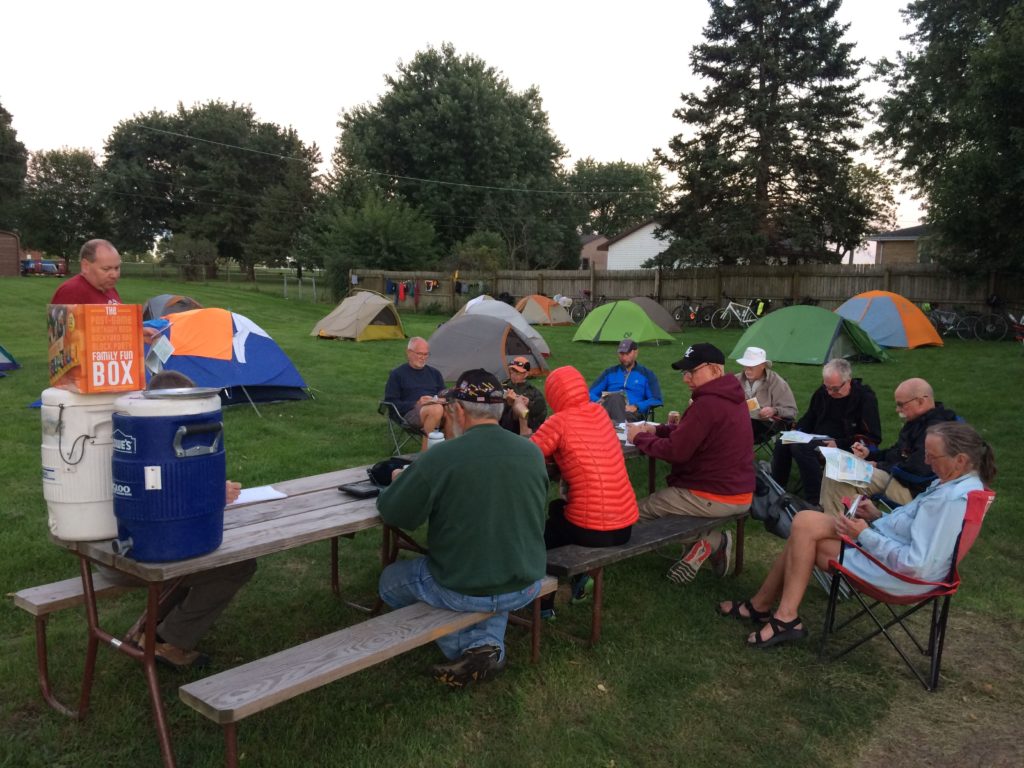
Day to Day
Cooking
If you are on a fully supported tour, cooking will not be part of your day-to-day activity. But on a van supported tour, it is a big and necessary part.
Everytime I bring up cooking and our cooking rotation, I can hear the moans and groans from everybody in the room. “I can’t cook!” exclaims someone or, “I can only boil water,” another confesses.
We usually have a good split between people who love to cook and people who don’t, but I would recommend that you learn to make 1 or 2 simple meals before going on one of these trips.
A simple spaghetti dinner will do the trick. It doesn’t have to be fancy. Just enough food that contains a good mix of carbohydrates and vegetables for energy and protein for recovery. Adventure Cycling provides a recipe book you can use if you are at a loss for ideas.
I’ve heard of people on other tours who would rather supplement the food budget for the day to go eat out than cook. That has never happened on my tours.
Cooking is one of those underrated activity that brings 2 strangers with a common passion together. It is the proverbial glue that keeps our group together in one cohesive community as we migrate from one location to the next.
Camping
I highly discourage anyone to go on a tour without ever setting up your camping equipment.
There will be times when you may have to setup and breakdown in the dark, so having familiarity with your equipment can go a long way. You’ll know all the small pieces and make sure you don’t lose it in the dark scramble.
Do yourself a favor and learn how to setup and use your equipment at home. Heck, go out on a trip or camp in the back yard if you have to because you’ll be setting up and breaking down every single day.
Make sure to inspect your equipment for possible points of failure. It would be really bad if your rain fly is no longer waterproof in the middle of a thunderstorm deluge. Check the stress points where poles are stretching the nylon.
Waterproof your tent if you have to. Check your poles to see if they may snap.
Riding
In this small period of your life, the only thing you will be thinking about is just your ride and food.
Your life becomes much more simple as other responsibilities melt away (hopefully) with every pedal pushed.
You adapt a nomadic life where you migrate from one location to the next, waking up every day at a new location and not knowing what to expect the next day.
It’ll be exciting! It’ll be scary! But this is your life right now, so make sure you take care of yourself.
Don’t overextend your limits and cause an injury. It is better to take your time and enjoy the journey rather than rushing into camp.
Be sure to stretch before and after a ride. Take lots of break. Hydrate constantly and eat constantly.
Nothing sucks more than not being able to ride because of an injury. Be kind to your body because it’ll pay you back in huge dividends.

Self-assessment
This next section is probably one of the most important and most overlooked aspect of a supported bike tour.
It’s everything that is between your two ears and nothing to do with your physical performance.
Know your purpose
Knowing why you are on your trip is very important. It’ll come to play when you are riding that long 90+ mile day bookended with 2 steep hills to climb.
If you know your WHY, it’ll be easier for you to keep pushing. You won’t just give up at the first sign of struggle.
You know it’s all about the journey and not just the start and beginning. That means there will be days where it’s going to be tough and days that’ll be easy.
Some trips may have more tough days than easy ones, but that’s okay because it’s all part of the journey. You are in a privilege scenario where you get to do this and not worry about anything else.
Know your physical limitation
Sometimes, you just have to get off the bike and walk that hill or ask for help. Knowing your body and your own physical limitations will help keep you in check.
It goes back to the idea that you shouldn’t try to do things that can possibly injure yourself.
Riding a bike tour is like eating an elephant. You should take one bite at a time until you finally finish it.
Being foolish when you’re by yourself is all on you, but being foolish in these circumstances with other people involved, will only ruin things for the rest of the group.
Know when to back down and ease off a bit. It’ll save you a lot of problems.
Be mentally prepared
Be prepared for all sorts of things. The weather may be terrible for the majority of the time.
In every bike tour I’ve ever gone to, weather has been a major factor every single time. Folks who have done the Trans Am have had weeks where it would rain nonstop.
This can wear on you mentally, but practicing gratitude and changing the way you approach these challenges will help tremendously.
Remember that you’re on this epic adventure and stuff like the weather is all part of it.
Make sure you have the right equipment for the job. I follow the following adage that “it’s not that the weather is bad, but rather, your equipment is bad” or something like that.
Comfort is a state of mind and if you have the right gear and mentality, any place you go can be comfortable.
The reality of the trip
As I’ve mentioned to you before, you won’t really see the SAG vehicle or van on a van supported trip, so don’t even think about its presence.
For most of the trips, the van is at camp.
That means you’re going to be riding almost every single day, except on layover days which is usually every week or so. To some, that is their normal routine. To others, that is something they will have to get used to.
Your body is highly adaptable to be able to go from 0 miles to 60 miles in a few days. Take advantage of this. You’ll get hungrier and stronger as you continue your riding.
Fatigue can be an issue but with enough training, this can be easily remedied.
My riders on the Route 66 were all pretty much the age of my parents or younger, but they were probably more fit than either my partner or myself. They would leave at 7 in the morning and knock out 80+ miles before 2 PM.
These were not your average riders. My group was very strong and I can attribute this with their time on the saddle prior to the start of the trip. Every single one had no issues or complaints.
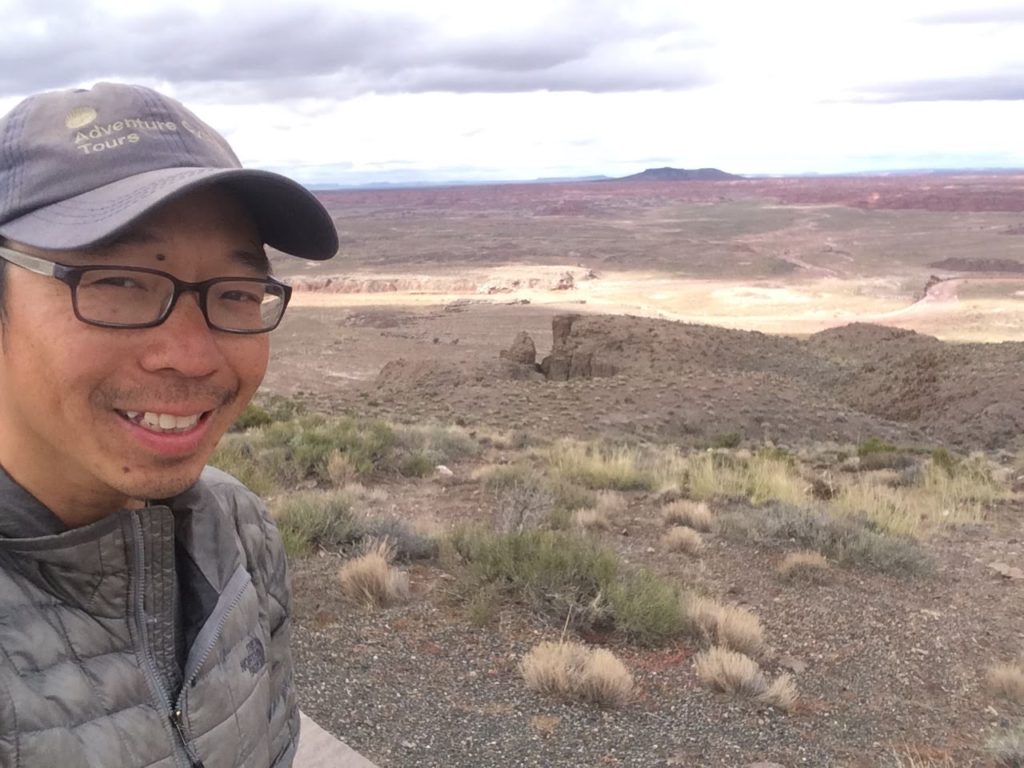
Final Thoughts
I personally had been on 2 different fully supported tour with the Arthritis Foundation on their California Coast Classic tour in 2010 and 2011. I actually wrote about it here.
Both of these trips got me ready to go on my own solo adventures and led me to grow my love of traveling by bike.
Many of the things mentioned on here was only gained through years and years of being on these self supported trips.
I hope that you find this useful before you go out on a supported bike tour. Let me know in the comments below and please share this with others who are contemplating bike touring. If you have further questions, ask them down there or send me a message through the contact form. Would love to help as much as I can.







Maria Vangilder
Posted at 14:23h, 07 MarchEnjoyed the article.. Great advice.
Johnny Lam
Posted at 16:15h, 07 MarchThanks Maria! Glad this helped. So when are you going to join me on an Adventure Cycling tour? 🙂
Pam Clarkson
Posted at 11:38h, 09 JulyThis was super helpful. I am embarking on my first Van Supported bike tour with ACA in September. Getting there is going to be the biggest challenge for me as I have never had to fly with or rebuild my bike before. Once I get there and start that first day I will be able to relax and enjoy the journey:)
Johnny Lam
Posted at 23:04h, 01 October@Pam Clarkson – Great to hear! Where did you go?